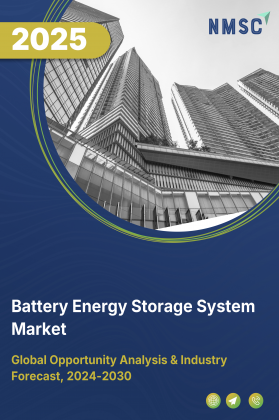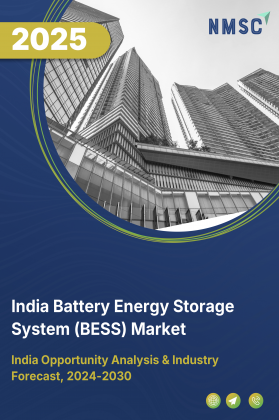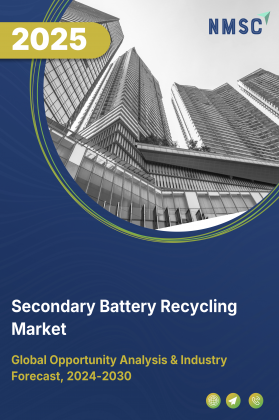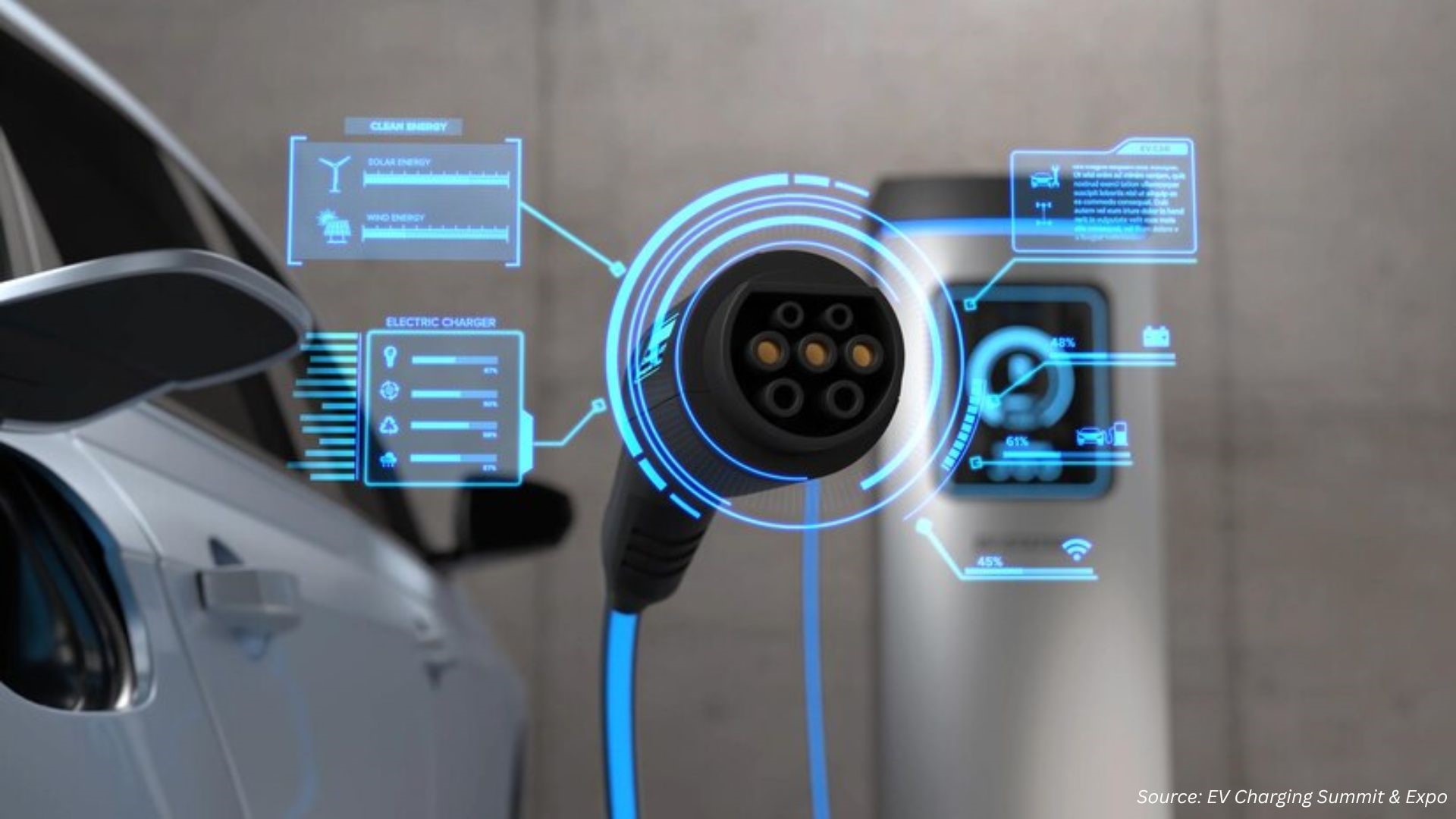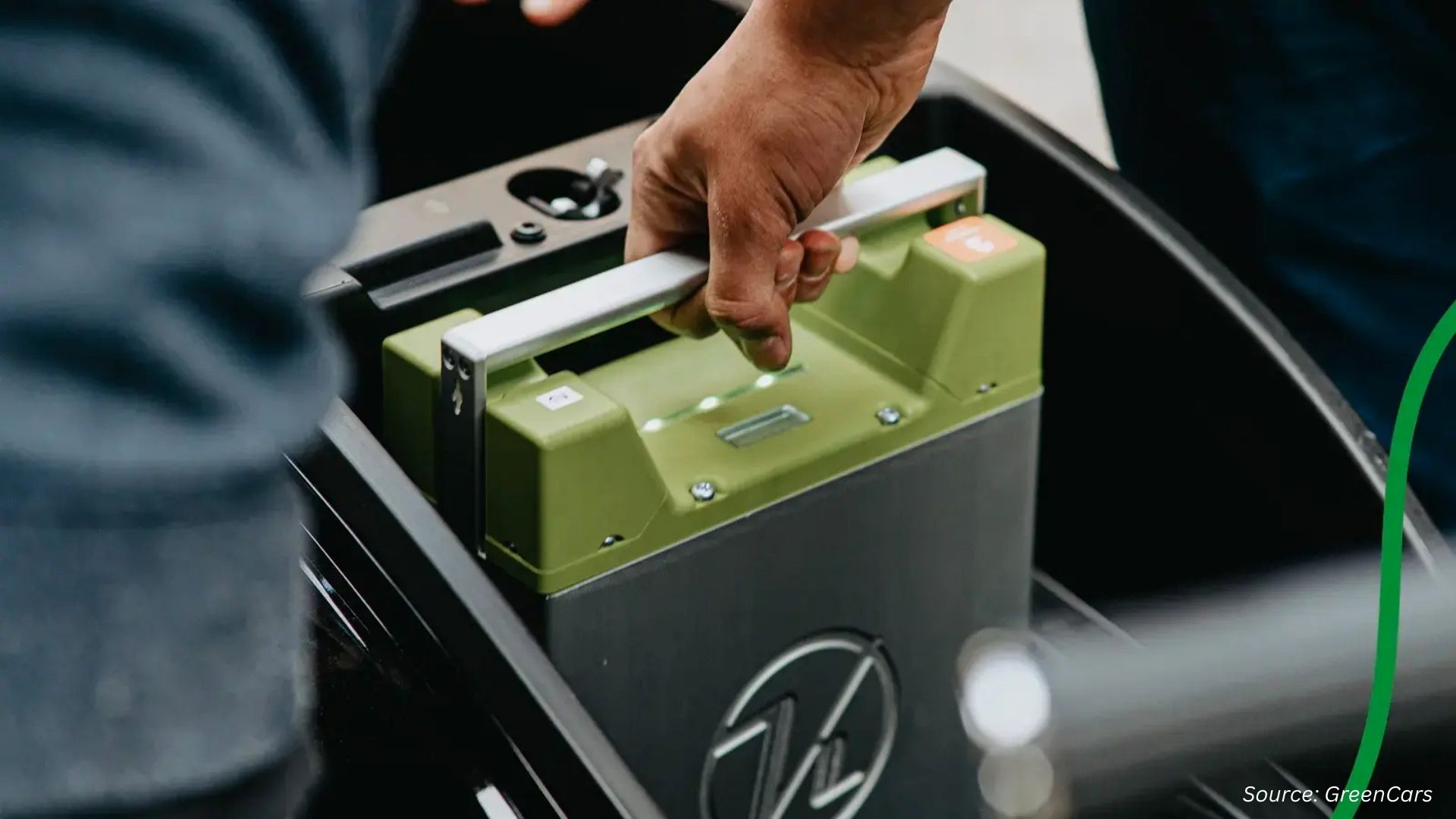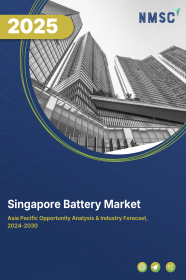
Singapore Battery Market by Type (Stationary, and Motive), by battery Type (Primary Batteries (Non-rechargeable), and Secondary Batteries (Rechargeable)), and by Voltage Type (Low Voltage Batteries (1V - 12V), and Others), by Power Capacity (Low Capacity Batteries (Up t1,000 mAh), and Others), By Self-Discharge Rate (Low Self-Discharge Rate Batteries, and Others), and by Application (Residential, Industrial, and Commercial) – Opportunity Analysis and Industry Forecast 2023-2030
Industry: Energy & Power | Publish Date: 11-Jul-2025 | No of Pages: 207 | No. of Tables: 168 | No. of Figures: 113 | Format: PDF | Report Code : EP714
Market Definition
Singapore Battery Market was valued at USD 365.3 million in 2022, and is predicted to reach USD 1336.1 million by 2030, with a CAGR of 17.6% from 2023 to 2030.
A battery operates as a mechanism that stores energy and later releases it by transforming chemical energy into electrical energy. Typically, batteries produce electricity by harnessing one or more electrochemical cells. Batteries can be categorized into two distinct types includes primary batteries and secondary batteries. Primary batteries, also known as non-rechargeable batteries, offer a straightforward and convenient energy supply for various portable electronic and electrical devices, including cameras, watches, toys, lights, radios, and more. In contrast, secondary batteries, often referred to as rechargeable batteries, possess the capability to be recharged electrically once they've been depleted. These energy storage solutions have evolved into indispensable sources of power in our daily routines.
The progress of cutting-edge technologies, encompassing smartphones, tablets, laptops, solar energy systems, and electric vehicles (EVs), has ushered in the era of robust batteries capable of prolonged endurance and providing essential energy requirements.
Government-Led EV Push and Falling Battery Costs Accelerate Demand
Singapore’s robust push towards electric vehicle (EV) adoption continues to be a significant driver of battery market growth. The government’s phased plan to phase out internal‑combustion vehicles by 2040, together with the EV Early Adoption Incentive (EEAI), is sharply accelerating battery demand. Under the EEAI, buyers of fully electric vehicles receive a 45 % rebate on the Additional Registration Fee (ARF), now capped at S$ 15,000 for registrations through 31 Dec 2025, lowering one of the biggest upfront costs of ownership. As of Q1 2025, EVs comprised 40.2 % of all new car registrations in Singapore, underscoring strong consumer uptake. At the same time, global lithium‑ion battery pack prices have plunged by roughly 85 % since 2010, greatly improving the affordability and scalability of EV fleets and further energizing the domestic battery ecosystem.
Energy Storage and Renewable Integration Drive Market Expansion
The Energy Market Authority (EMA) is playing an instrumental role in embedding batteries at the heart of Singapore’s energy transition. With solar capacity on the rise, battery‑based Energy Storage Systems (ESS) have become indispensable to smooth out intermittent generation, balance load and provide black‑start capability. Singapore’s first utility‑scale ESS—a 2.4 MW/2.4 MWh installation at a grid substation—was commissioned under an EMA–SP Group partnership, marking a critical proof‑point for large‑scale storage. EMA has also launched regulatory sandboxes and published clear ESS deployment guidelines, creating a supportive framework for both centralized and distributed battery projects. As these systems proliferate, they are cementing long‑term demand for high‑performance storage technologies.
Research and Development Enhancements Improve Safety and Performance
Singapore’s leading R&D institutions, including A*STAR, NUS, NTU, and SUTD, are making strides in battery innovation, improving safety, performance, and sustainability. Notable advancements include fire-resistant sodium-ion batteries, smart Battery Management Systems (BMS), and immersion-cooled battery packs. These developments are addressing long-standing concerns over battery overheating and safety, especially in high-density urban deployments. As battery reliability improves, so does their attractiveness for applications across electric mobility, consumer electronics, and smart grids.
Battery Safety and Recycling Challenges Impede Growth
Despite rising demand, the Singapore battery market faces serious constraints in the areas of safety and end-of-life battery management. Improper disposal of lithium-ion and other battery types can result in the release of toxic substances such as cadmium, lithium, and lead, posing environmental and health risks. While facilities like TES’s Tuas-based “TES B” plant can process 14 tonnes of used batteries per day, national recycling capacity is still insufficient to meet the projected influx of EV and consumer electronics batteries. Regulatory initiatives like Extended Producer Responsibility (EPR) are under development but have yet to deliver comprehensive solutions. The environmental concerns and lack of large-scale recycling infrastructure remain key barriers to long-term market maturity.
Second-Life Battery Applications Create a Circular Economy Model
The reuse of EV batteries for stationary energy storage is emerging as a lucrative opportunity in Singapore. According to the Singapore Battery Consortium, more than 10 MWh of used EV batteries have already been repurposed for applications such as microgrids, peak shaving, and backup systems. Initiatives like the TES–GenPlus partnership are advancing these second-life solutions, which are estimated to reduce carbon emissions by up to 30 times compared to producing new batteries. This growing second-life ecosystem supports sustainability while opening new revenue streams in the energy and industrial sectors.
Advanced Technologies Like Nano-Diamond and Sodium-Ion Batteries Offer Future Growth
Next-generation battery technologies are gaining momentum in Singapore, offering new opportunities for high-performance applications. Nano-Diamond Batteries (NDBs), which use nuclear waste as a power source and offer decades-long performance without recharging, are gaining early-stage interest for use in defense, aerospace, and critical infrastructure. Likewise, sodium-ion batteries developed by local universities offer non-flammable, cost-effective alternatives to lithium-ion chemistries, with applications in grid storage and electric transport. These innovations could place Singapore at the forefront of advanced battery manufacturing in Asia.
Competitive Landscape
The Singapore battery industry includes several market players such as Samsung SDI, Panasonic Energy, BYD Company Limited, Tesla Energy, EnerSys Reserve Power Pte Ltd, Saft Groupe SAS (TotalEnergies), VARTA AG, Siemens Energy, ABB Ltd, Sembcorp Industries, Clarios Singapore, Leoch International Technology Ltd., Chloride Batteries S.E. Asia Pte Ltd (Exide Industries), Fukuda Storage Battery Co. Ltd., Contemporary Amperex Technology Co. Limited (CATL).
Key Benifits
-
The Singapore battery market report provides a quantitative analysis of the current market and estimations through 2023-2030 that assists in identifying the prevailing market opportunities to capitalize on.
-
The study comprises a deep dive analysis of the market trend including the current and future trends for depicting the prevalent investment pockets in the market.
-
The information related to key drivers, restraints, and opportunities and their impact on the market is provided in the report.
-
The competitive analysis of the market players along with their market share in the Singapore battery market.
-
The SWOT analysis and Porter’s Five Forces model are elaborated in the study.
-
Value chain analysis in the market study provides a clear picture of the stakeholders’ roles.
Singapore Battery Market Key Segments
By Type
-
Stationary
-
Motive
By Battery Type
-
Primary Batteries (Non-rechargeable)
-
Alkaline Batteries
-
Zinc-Carbon Batteries
-
Lithium-Thionyl Chloride Batteries
-
-
Secondary Batteries (Rechargeable)
-
Lead-Acid Batteries
-
Nickel-Cadmium (NiCd) Batteries
-
Nickel-Metal Hydride (NiMH) Batteries
-
Lithium-ion Batteries
-
Lithium Nickel Manganese Cobalt (LI-NMC)
-
Lithium Iron Phosphate (LFP)
-
Lithium Cobalt Oxide (LCO)
-
Lithium Titanate Oxide (LTO)
-
Lithium Manganese Oxide (LMO)
-
Lithium Nickel Cobalt Aluminum Oxide (NCA)
-
-
-
Other Secondary Batteries
By Voltage Type
-
Low Voltage Batteries (1V - 12V)
-
Medium Voltage Batteries (24V - 100V)
-
High Voltage Batteries (200V - 1000V)
By Power Capacity
-
Low Capacity Batteries (Up to 1,000 mAh)
-
Medium Capacity Batteries (1,000 mAh to 10,000 mAh)
-
High Capacity Batteries (10,000 mAh to 100,000 mAh)
-
Ultra High Capacity Batteries (More than 100,000 mAh)
By Self-Discharge Rate
-
Low Self-Discharge Rate Batteries
-
Medium Self-Discharge Rate Batteries
-
High Self-Discharge Rate Batteries
By Application
-
Residential
-
Industrial
-
Automotive
-
ICE Engines
-
Passenger vehicles
-
Commercial vehicles
-
-
Electric vehicles
-
E-Bikes
-
E-Cars
-
E-Buses
-
E-Trucks
-
-
-
Medical
-
Telecom & IT
-
Consumer Electronics
-
Power & Utility
-
Aerospace
-
Marine
-
Others
-
-
Commercial
Key Players
-
Samsung SDI
-
Panasonic Energy
-
BYD Company Limited
-
Tesla Energy
-
EnerSys Reserve Power Pte Ltd
-
Saft Groupe SAS (TotalEnergies)
-
VARTA AG
-
Siemens Energy
-
ABB Ltd
-
Sembcorp Industries
-
Clarios Singapore
-
Leoch International Technology Ltd.
-
Chloride Batteries S.E. Asia Pte Ltd (Exide Industries)
-
Fukuda Storage Battery Co. Ltd.
-
Contemporary Amperex Technology Co. Limited (CATL)
REPORT SCOPE AND SEGMENTATION:
|
Parameters |
Details |
|
Market Size in 2022 |
USD 365.3 million |
|
Revenue Forecast in 2030 |
USD 1336.1 million |
|
Growth Rate |
CAGR of 17.6% from 2023 to 2030 |
|
Analysis Period |
2022–2030 |
|
Base Year Considered |
2022 |
|
Forecast Period |
2023–2030 |
|
Market Size Estimation |
Million (USD) |
|
Growth Factors |
Government-Led EV Push and Falling Battery Costs Accelerate Demand Energy Storage and Renewable Integration Drive Market Expansion Research and Development Enhancements Improve Safety and Performance |
|
Companies Profiled |
15 |
|
Market Share |
Available for 10 companies |
|
Customization Scope |
Free customization (equivalent up to 80 working hours of analysts) after purchase. Addition or alteration to country, regional, and segment scope. |
|
Pricing and Purchase Options |
Avail customized purchase options to meet your exact research needs. |






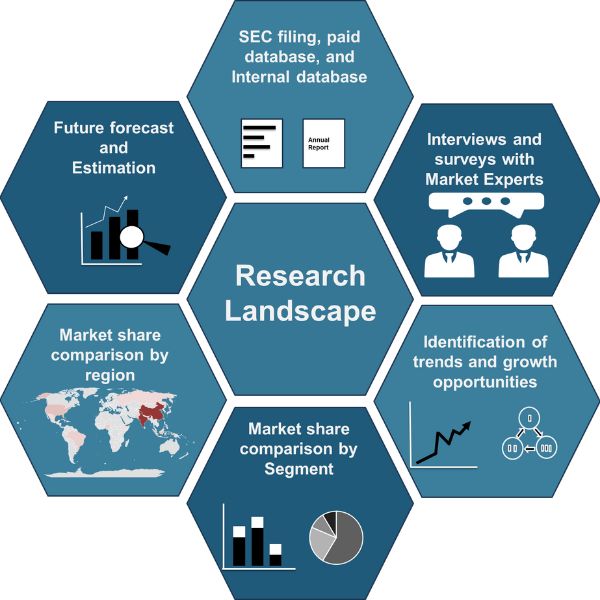
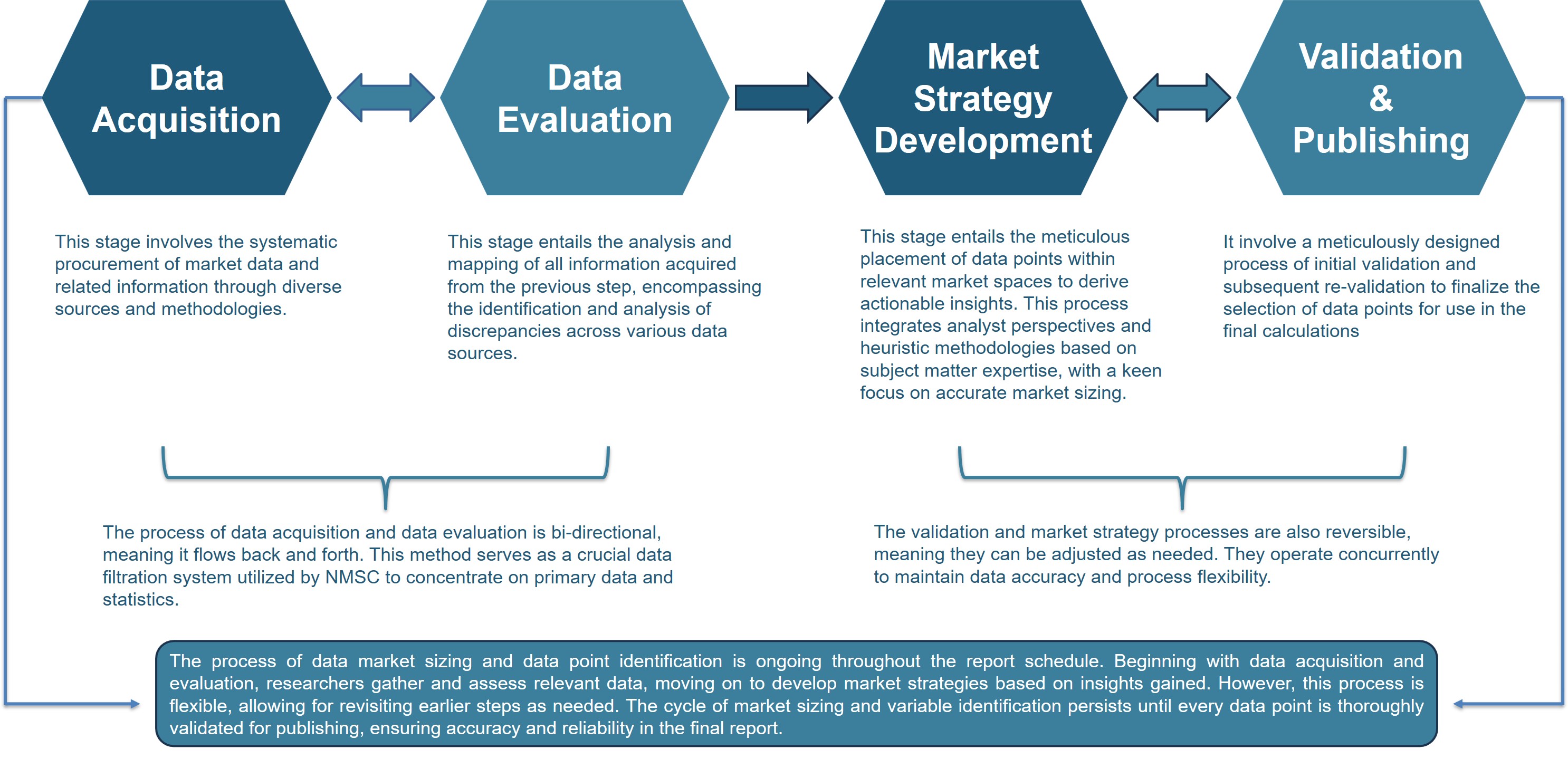
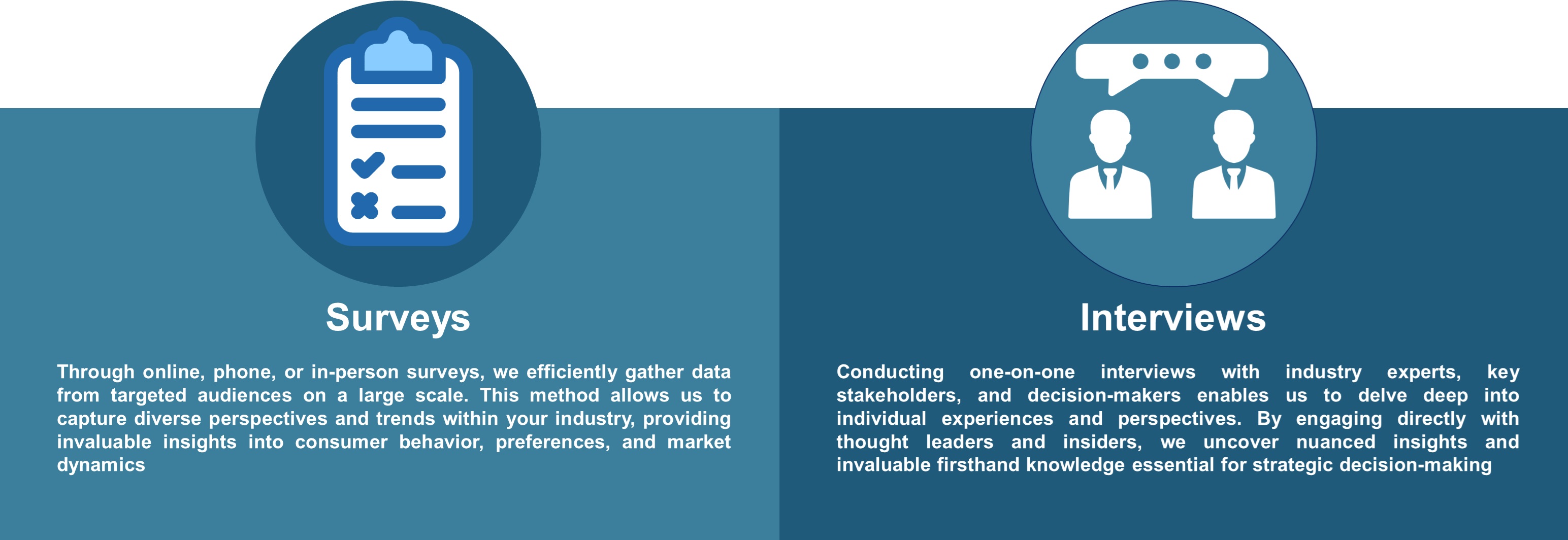



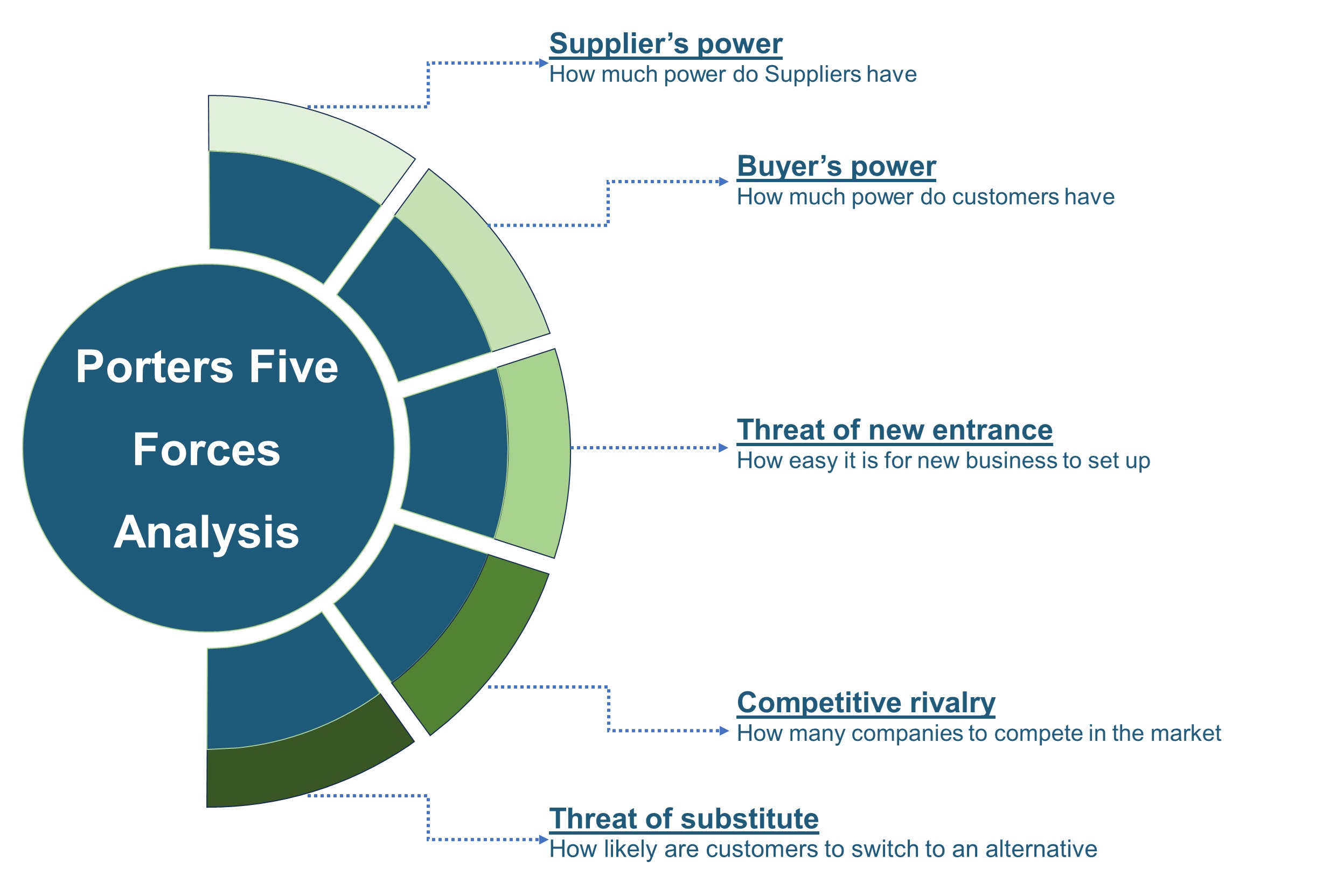







 Speak to Our Analyst
Speak to Our Analyst



